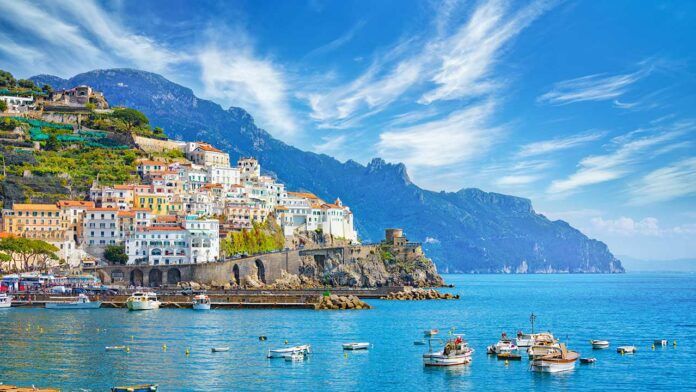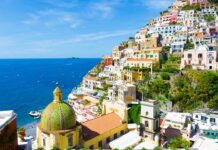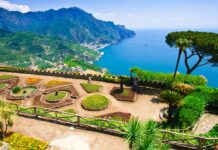The unmistakable historical center of Amalfi is chosen as a destination by millions of tourists every year, attracted by its historical and artistic heritage, the indescribable beauty of the landscape and the delicious food.
Amalfi, which gives its name to the entire Coast, was founded by the Romans and in the early Middle Ages was one of the four Maritime Republics (along with Pisa, Genoa and Venice), holding for a long time the monopoly of trade with the East. The town center, declared a UNESCO World Heritage Site in 1997, is a picturesque agglomeration of alleys and stairways that wedge between white houses and terraced gardens, dotted with lemon trees and characteristic craft stores.
Every corner of Amalfi offers evocative perspectives and postcard views, which are combined with a colorful and lush nature, but at the same time seemingly inhospitable, between cliffs and rocks overlooking the sea. A place of dazzling beauty and unexpected contrasts, which has enchanted generations of travelers, so much so as to make the poet Renato Fucini say: “the day of judgment, for the Amalfitans who will go to Paradise, will be a day like all the others”. The main square is dominated by the Cathedral of Sant’Andrea, in Arab-Norman style, which rises in a panoramic position at the top of a long flight of steps. Dedicated to the patron saint of the city, it is actually a complex consisting of churches and structures of various ages, built in different periods one above the other. From the atrium of the church you can access the beautiful Cloister of Paradise, built in the second half of 1200 as a cemetery for the noble families of Amalfi. Formed by a four-sided portico with cross vaults, intertwined arches, whitewashed with Moorish influence, the cloister still preserves five prestigious sarcophagi and a lovely little garden surrounded by palm trees.
Another not-to-be-missed visit is the Museo della Carta (Paper Museum), a former paper mill transformed into a museum in 1969. It houses the machinery and equipment that were used to make the prestigious Amalfi paper by hand, according to processes learned from the Arab world and then perfected on-site. Also noteworthy is the Arsenale, the ancient shipyard where fighting galleys were built when Amalfi was a Maritime Republic. It is the only example of medieval arsenal still existing in the south of Italy and today it is the seat of the Museo della bussola e del Ducato Amalfitano (Compass Museum and of the Amalfi Duchy) and an exceptional location for cultural events.
A few kilometers from the center of Amalfi, in Conca dei Marini, there is another of the many natural wonders of the Coast: the Grotta dello Smeraldo (Emerald Grotto). It is a karstic cavity partially invaded by the sea which owes its name to the fairy-tale shades of intense green assumed by the water thanks to the sun rays which filter through an underwater fissure. Since 1956 the cave has hosted an underwater nativity scene on its seabed and every Christmas a group of divers lay flowers and votive offerings at the feet of the Baby Jesus.
And after discovering all the natural and cultural beauties of Amalfi, you can relax with a little shopping in the small, charming boutiques and numerous craft stores that dot the historic center. Some of the most popular souvenirs include handmade paper, limoncello made from Amalfi’s famous lemons, and leather sandals.










